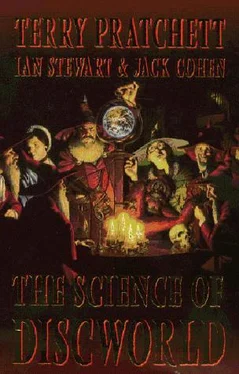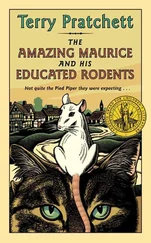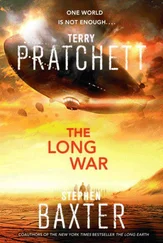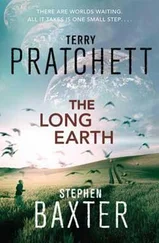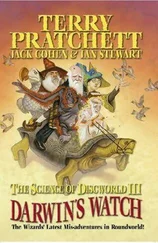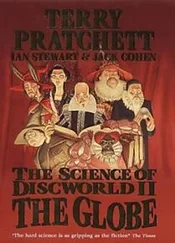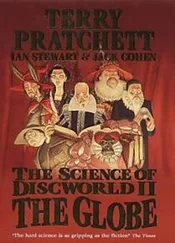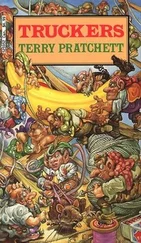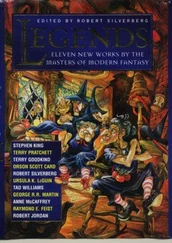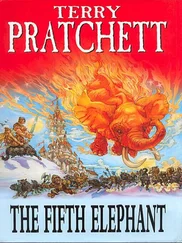Terry Pratchett - The Science of Discworld I
Здесь есть возможность читать онлайн «Terry Pratchett - The Science of Discworld I» весь текст электронной книги совершенно бесплатно (целиком полную версию без сокращений). В некоторых случаях можно слушать аудио, скачать через торрент в формате fb2 и присутствует краткое содержание. Жанр: Фантастика и фэнтези, на английском языке. Описание произведения, (предисловие) а так же отзывы посетителей доступны на портале библиотеки ЛибКат.
- Название:The Science of Discworld I
- Автор:
- Жанр:
- Год:неизвестен
- ISBN:нет данных
- Рейтинг книги:5 / 5. Голосов: 1
-
Избранное:Добавить в избранное
- Отзывы:
-
Ваша оценка:
- 100
- 1
- 2
- 3
- 4
- 5
The Science of Discworld I: краткое содержание, описание и аннотация
Предлагаем к чтению аннотацию, описание, краткое содержание или предисловие (зависит от того, что написал сам автор книги «The Science of Discworld I»). Если вы не нашли необходимую информацию о книге — напишите в комментариях, мы постараемся отыскать её.
The Science of Discworld I — читать онлайн бесплатно полную книгу (весь текст) целиком
Ниже представлен текст книги, разбитый по страницам. Система сохранения места последней прочитанной страницы, позволяет с удобством читать онлайн бесплатно книгу «The Science of Discworld I», без необходимости каждый раз заново искать на чём Вы остановились. Поставьте закладку, и сможете в любой момент перейти на страницу, на которой закончили чтение.
Интервал:
Закладка:
The chemistry fits, too. Near the Sun, those incipient planets get very hot, too hot for solid water to form. Further out, around the orbit of Jupiter for a dustcloud suitable for making our Sun and solar system, water can freeze into solid ice. This distinction is important for the chemical composition of the planets, and we can see the main outlines if we focus on just three elements: hydrogen, oxygen, and silicon. Hydrogen and oxygen happen to be the two most abundant elements in the universe, apart from helium which doesn't undergo chemical reactions. Silicon is less abundant but still common. When silicon and oxygen combine together, you get silicates, rocks. But even if the oxygen can mop up all the available silicon, some 96% of the oxygen is still unattached, and it combines with hydrogen to make water. There is so much hydrogen, a thousand times as much as oxygen, that virtually all of the oxygen that doesn't go into rocks gets locked away in water. So by far the most common compound in the condensing disc is water.
Close to the star, that water is liquid, even vapour, but out at Jovian distances, it's solid ice. You can pick up a lot of solid mass if you're condensing in a region where ice can form. So the planets there are bigger, and (at least to begin with) they are icy Nearer the star, the planets are smaller, and rocky. But now the big guys can parky their initial weight advantage into an even bigger one. Anything that is ten times the mass of the Earth, or greater, can attract and retain the two most abundant elements of the disc, hydrogen and helium. So the big balls soak up large amount of extra mass in the form of these two gases. They can also retain compounds like methane and ammonia, which are volatile gases closer to the star.
This theory explains rather a lot. It gets all the main features of the solar system pretty much right. It allows for the odd exceptional motion, but not too many. It agrees with observations of condensing gas clouds in distant regions of space. It may not be perfect, and some special pleading might be necessary to explain odd things like Pluto, but most of the important features click neatly into place.
The future of the solar system is at least as interesting as its past. The picture of the solar system that emerged from the ideas of Newton and his contemporaries was very much that of a clockwork universe, a celestial machine that, once set ticking, would continue to follow some simple mathematical rules and continue ticking merrily away forever. They even built celestial machines, called orreries, with lots and lots of cogwheels, in which little brass planets with ivory moons went round and round when you turned a handle.
We now know that the cosmic clockwork can go haywire. It won't happen quickly, but there may be some big changes to the solar system on the way. The underlying reason is chaos, chaos in the sense of 'chaos theory', with all those fancy multicoloured 'fractal' things, a rapidly expanding area of mathematics which is invading all of the other sciences. Chaos teaches us that simple rules need not lead to simple behaviour, something that Ponder Stibbons and the other wizards are in the process of discovering. In fact, simple rules can lead to behaviour that in certain respects has distinct elements of randomness. Chaotic systems start out behaving predictably, but after you cross some 'prediction horizon' all predictions fail. Weather is chaotic, with a prediction horizon of about four days. The solar system, we now know, is chaotic, with a prediction horizon of tens of millions of years. For example, we can't be sure which side of the Sun Pluto will be in a hundred million years' time. It will be in the same orbit, but its position in that orbit is completely uncertain.
We know this because of some mathematical work that was done, in part, with an orrery, but this was a 'digital orrery', a custom-built computer that could do celestial mechanics very fast. The digital orrery was developed by Jack Wisdom's research group, which, in competition with its rival headed by Jaques Laskar, has been extending our knowledge of the solar system's future. Even though a chaotic system is unpredictable in the long run, you can make a whole series of independent attempts at predicting it and then see what they agree about. According to the mathematics, you can be pretty sure those things are right.
One of the most striking results is that the solar system is due to lose a planet. About a billion years from now, Mercury will move outwards from the Sun until it crosses the orbit of Venus. At that point, a close encounter between Venus and Mercury will fling one or the other, possibly both, out of the solar system altogether -unless they hit something on the way, which is highly unlikely, but possible. It might even be the Earth, or the passing Venus might join with us in a cosmic dance whose end result is the Earth being flung out of the solar system. The details are unpredictable, but the general scenario is very likely.
This means that we've got the wrong picture of the solar system. On a human timescale it's a very simple place, in which nothing much changes. On its own timescale, hundreds of millions of years, it's full of drama and excitement, with planets roaring all over the place, whirling around each other, and dragging each other out of orbit in a mad gravitational dance.
This is vaguely reminiscent of Worlds in Collision, a book published in 1950 by Immanuel Velikovsky, who believed that a giant comet was once spat out by Jupiter, passed close to the Earth twice, had a love affair with Mars (giving rise to a brood of baby comets), and finally retired to live in peace as Venus. Along the way it gave rise to many strange effects that became stories in the Bible. Velikovsky was right about one thing: the orbits of the planets are not fixed forever. He wasn't right about much else.
Do other solar systems encircle distant stars, or are we unique? Until a few years ago there was a lot of argument about this question, but no hard evidence. Most scientists, if they had to bet, would have backed the existence of other solar systems, because the collapsing dustcloud mechanism could easily get going almost anywhere there's cosmic dust, and there are a hundred billion stars in our own galaxy, let alone the billions upon billions of others in the universe, all of which once were cosmic dust. But that's only indirect evidence. Now the position is much clearer. Characteristically, however, the story involves at least one false start, and a critical re-examination of evidence that at first looked rather convincing.
In 1967 Jocelyn Bell, a graduate student at the University of Cambridge, was working for a doctorate under the direction of Anthony Hewish. Their field was radio astronomy Like light, radio is an electromagnetic wave, and like light, radio waves can be emitted by stars. Those radio waves can be detected using parabolic dish receivers, today's satellite TV dishes are a close relative, rather misleadingly called 'radio telescopes', even though they work on very different principles from normal optical telescopes. If we look at the sky in the radio part of the electromagnetic spectrum, we can often 'see' things that are not apparent using ordinary visible light. This should be no surprise: for example military snipers can 'see in the dark' using infra-red waves, detecting things by the heat they emit. The technology in those days wasn't terribly slick, and the radio signals were recorded on long rolls of paper using automatic pens that drew wiggly curves in good old-fashioned ink. Bell was given the task of looking for interesting things on the paper charts, carefully scanning about 400 feet of chart per week. What she found was very strange, a signal that pulsated about thirty times per second. Hewish was sceptical, suspecting that the signal was somehow generated by their measuring instruments, but Bell was convinced it was genuine. She searched through three miles of previous charts and found several earlier instances of the same signal, which proved she was right. Something out there was emitting the radio equivalent of a reverberating whistle. The object responsible was named a 'pulsar', a pulsating starlike object.
Читать дальшеИнтервал:
Закладка:
Похожие книги на «The Science of Discworld I»
Представляем Вашему вниманию похожие книги на «The Science of Discworld I» списком для выбора. Мы отобрали схожую по названию и смыслу литературу в надежде предоставить читателям больше вариантов отыскать новые, интересные, ещё непрочитанные произведения.
Обсуждение, отзывы о книге «The Science of Discworld I» и просто собственные мнения читателей. Оставьте ваши комментарии, напишите, что Вы думаете о произведении, его смысле или главных героях. Укажите что конкретно понравилось, а что нет, и почему Вы так считаете.
